Did you know that, despite its vibrant cultural scene, dance remains illegal in a staggering 80% of New York City, the city that never sleeps? Since its inception in 1970, underground dance culture has been a symbol of liberation, expression, and unity. However, it has also faced oppressive dancing laws, with penalties ranging from fines to imprisonment and even business licensure revocation. Through the tireless advocacy efforts of Dance Parade and their initiative LegalizeDance.org, a pivotal moment was achieved in 2017 with the repeal of the century-old Cabaret Law. Now, their focus has shifted to collaborating with the city to modernize outdated zoning laws, aiming to create a more inclusive and vibrant dance landscape for all.
At the helm of this New York Dance Parade advocacy and with a diverse background spanning Fortune 500 companies and a lifelong devotion to dance, Executive Director Greg Miller champions the belief that the joy of dance lies in its ability to unite individuals with a shared passion for expression.
Greg’s path to Dance Parade is as eclectic as the dance styles he embraces. Having trekked the corporate world for over a decade, Greg’s transition to the non-profit sector, co-producing events like the Fall Collection, heralded a new chapter in his career. It was during this time that his international experiences and unwavering love for dance converged, paving the way for the birth of Dance Parade in 2007.
Central to Greg’s vision is the idea of dance as a fundamental right, a belief that fuels his advocacy work through LegalizeDance.Org. Through this platform, he strives to dismantle barriers and ensure that everyone has the opportunity to experience the transformative power of movement. At the heart of Dance Parade’s ethos is the celebration of diversity – a vision embodied by Greg’s leadership, which encourages participation from all corners of the dance community.
Beyond his role at Dance Parade, Greg’s personal dance journey reflects his deep connection to the art form. From Cuban Salsa to Roller Disco and Gabrielle Roth’s 5Rhythms, Greg finds inspiration in the healing and unifying potential of dance. His dedication to the arts extends far beyond the confines of Dance Parade, as evidenced by his involvement with organizations like being the General Manager of Nimbus Dance Works and rendering nonprofit service as Advisory Board Member of the Neville Dance Theatre.
In this interview, we look into Greg Miller’s remarkable journey, exploring the intersections of dance, culture, and community. Through his experiences and insights, we gain a deeper understanding of the impact that dance can have in bridging divides and fostering a more inclusive world.
TWB: Can you share with us the inspiration behind founding Dance Parade in 2007 and how it has evolved under your leadership?
GM: The founding of Dance Parade in 2007 was fueled by a confluence of inspirations. As part of the “Metropolis in Motion” group, I had been actively advocating for public awareness regarding the unequal application of New York City’s outdated 1926 dance licensing requirement. This law unfairly impacted marginalized communities, with “No Dancing Allowed” signs disproportionately targeting their venues. There was a general lack of understanding surrounding the “Cabaret License” and the limited access it granted.
My role in “Metropolis in Motion” involved obtaining permits for protest dances. One such event was a dance marathon held outside the New York State Supreme Court, supporting a lawsuit against the city’s cabaret law brought by four dance groups. Following this event, I felt a strong desire to maintain the momentum and continue raising awareness.
Coincidentally, 2006 saw the Deitsch Art Gallery sponsoring an “Art Parade.” This sparked the idea – if there could be an Art Parade, why not a Dance Parade? Organizing such a large-scale event demanded significant coordination between volunteers and dancers. However, the dedication paid off. The inaugural Dance Parade launched on May 19th, 2007, and successfully garnered worldwide media attention.
TWB: Your background includes management roles in Fortune 500 companies like Lehman Brothers and Revlon. How did your corporate experience influence your approach to leading a nonprofit organization like Dance Parade?
GM: My background in Fortune 500 companies like Lehman Brothers and Revlon provided a strong foundation for leading Dance Parade. My early experience in accounting at Lehman Brothers instilled the importance of financial discipline. Understanding balance sheets and income statements became essential tools for measuring Dance Parade’s performance and ensuring our financial health.
Years spent in planning and analysis roles at All Nippon Airways and Revlon honed my skills in building adaptable budgets and forecasts. This experience proved invaluable in navigating the uncertainties of funding for a new non-profit like Dance Parade. I adopted a conservative approach to forecasting, ensuring our plans were realistic while still exciting potential board members.
While I wasn’t initially familiar with the intricacies of non-profit operations, I leveraged my network to secure pro-bono legal assistance. These advisors played a crucial role in establishing our bylaws, initial contracts, and trademarking “Dance Parade” – all elements underpinned by our compelling mission.
My corporate experience even extended to the creative side. Having been involved in brand development and product launches, I was able to apply those skills to building the Dance Parade brand through our early marketing efforts.
In essence, my corporate experience provided a transferable skillset that proved instrumental in establishing a strong foundation for Dance Parade’s success.
TWB: LegalizeDance.Org, an initiative you’re actively involved in, aims to advocate for legal reform regarding dance. Could you elaborate on the importance of this initiative and its impact on communities?
GM: LegalizeDance.Org is an initiative close to my heart because it tackles a seemingly trivial issue with a surprisingly profound impact on communities, particularly marginalized ones. While the concept of “legalizing dance” might conjure images of the movie Footloose, it’s a very real concern in New York City. Until 2017, a relic of a bygone era – a 1926 licensing requirement for dancing – remained on the books.
This outdated law disproportionately affected certain communities. Obtaining a dance license was a bureaucratic nightmare, with LGBTQAI+, Black, and Latino venues facing even greater hurdles. Furthermore, local police wielded informal pressure, often targeting these same venues and requesting they refrain from hosting hip-hop or LGBTQ+ events.
The consequences were far-reaching. Dance is a powerful form of expression, fostering community, cultural exchange, and joy. Restricting it stifled these vibrant aspects of life, particularly for those who already faced social and cultural barriers. LegalizeDance.Org aimed to dismantle these limitations and ensure everyone’s right to dance freely.
Our approach was multifaceted. We highlighted the absurdity of the situation, using humor as a tool for awareness. We parodied the “dance police” used to enforce the law, turning the tables and issuing mock citations for not dancing. This lighthearted approach drew attention and sparked conversations.
But beyond the humor, we engaged in serious legal advocacy. We fought for the repeal of the archaic licensing law, which finally happened in 2017. However, the fight isn’t over. Zoning laws still restrict dancing in most New York City venues. Here, the issue intersects with systemic racism: live music is permitted, yet dancing – a core expression for many cultures – remains restricted. LegalizeDance.Org continues to push for reform of these zoning laws, ensuring equitable access to dance for all communities.
By dismantling these barriers, LegalizeDance.Org empowers communities and celebrates the cultural richness that dance brings to our city.
TWB: With a rich international background, having lived abroad for nine years, how has your global perspective influenced the cultural diversity showcased in Dance Parade?
GM: My nine years living abroad profoundly shaped my perspective on dance. Witnessing the vibrant dance traditions in China, India, and the Middle East instilled a deep appreciation for these often under-recognized cultural treasures. These ancient forms, along with the wisdom embedded in indigenous dances, opened my eyes to the profound stories movement can tell.
Living in different countries also exposed me to the energy and innovation of modern social and urban dance styles. I saw how these forms served as a powerful tool for self-expression and community building, particularly for marginalized groups.
This global perspective directly translates into the cultural diversity showcased in Dance Parade. We actively encourage participation from a wide range of dance styles, from traditional folk dances to cutting-edge contemporary creations. This inclusivity reflects the rich tapestry of cultures that make New York City what it is.
The beauty of Dance Parade lies not just in the individual performances, but in the cross-cultural exchange it fosters. The Parade becomes a platform for discovery and appreciation. People from all backgrounds can experience the joy and stories expressed in different dance forms. A ballroom enthusiast might be inspired to try a few hip-hop steps, and vice versa. This cross-pollination breaks down barriers and fosters a sense of shared humanity.
Ultimately, my international experience fueled my commitment to showcasing the vast spectrum of dance at Dance Parade. The Parade serves as a celebration of our global community, united by the universal language of movement.
TWB: As a lifelong practitioner of various dance forms yourself, including Cuban Salsa, Roller Disco, and Gabrielle Roth’s 5Rhythms, how has dance personally impacted your life and leadership journey?
GM: My lifelong journey as a dancer, exploring diverse forms like Cuban Salsa, Roller Disco, and Gabrielle Roth’s 5Rhythms, has profoundly impacted me on both a personal and professional level. Dance has fostered a deep sense of community, but more importantly, it’s shown me the power of connection that transcends the technical aspects of any specific style.
The joy of dance lies in the shared experience, in the coming together of individuals with a common love for movement and expression. Witnessing this camaraderie within the dance community has translated beautifully to my leadership approach at Dance Parade. Our team is fueled by a similar passion, a dedication that goes beyond the logistics of event production. We value each other not just as colleagues, but as individuals with unique talents and perspectives. This fosters a collaborative and supportive environment, a stark contrast to the siloed structure that can often plague corporate cultures.
Beyond fostering community, my experience with the 5Rhythms practice has been particularly transformative. This movement meditation goes beyond physical movement, offering profound insights into self-awareness. The 5Rhythms have equipped me with invaluable tools for navigating the challenges of leadership. These practices have helped me stay grounded during turbulent times, communicate clearly and authentically, and navigate the inevitable power dynamics inherent in producing a large-scale event. By encouraging mindfulness and a connection to my body, the 5Rhythms have helped me become a more centered and effective leader.
In essence, dance has become an integral part of who I am. It has taught me the power of connection, self-awareness, and resilience. These lessons have served as guiding principles in my leadership journey, allowing me to create a thriving community at Dance Parade and navigate the complexities of leading a large organization.
TWB: Dance Parade emphasizes “One Parade-Many Cultures.” How do you ensure the representation of diverse dance forms and cultures within the parade, and what challenges have you faced in this endeavor?
GM: The core principle of Dance Parade is “One Parade-Many Cultures” which was a theme from our early years. We celebrate the richness of New York City by showcasing a vibrant tapestry of dance styles and backgrounds. However, achieving true diversity goes beyond simply having a large number of participants. We actively strive for a balanced representation, ensuring no single dance form or cultural group dominates the Parade.
One crucial element in achieving this balance is our seven-member curation committee. This committee is composed of diverse professional dancers, each bringing a unique perspective on the dance world. The curators meticulously review our lineup, actively seeking out groups that will enhance the Parade’s cultural richness. Their focus extends beyond just dance styles; they also consider the cultural backgrounds and identities of the participants.
Our definition of diversity goes beyond ethnicity. We recognize the importance of supporting cultural heritage preservation, including indigenous dance traditions from the Americas, Muslim dance forms from the Philippines and Indonesia, and dance as an artistic expression for people with disabilities. Furthermore, we embrace the creativity and energy of small groups that push boundaries with unique costumes and movement styles. Every voice, every story, deserves to be heard and celebrated in Dance Parade.
To ensure an inclusive environment, our Board of Directors established a “marginalized community fund.” This fund empowers our curators to offer stipends and fee waivers, making it easier for new and underrepresented groups to participate. Logistics also play a crucial role. Many dance forms require mobile sound systems to truly shine in the Parade. We address this challenge by providing parade floats or mobile audio support to those who need it.
However, the pursuit of true diversity comes with its own set of challenges. Identifying and reaching out to underrepresented groups can be time-consuming. Securing funding for the “marginalized community fund” is an ongoing effort but one that our Board of Directors supports. Even within diverse communities, there can be internal politics and language barriers to overcome.
Despite these challenges, Dance Parade remains committed to its core value of inclusivity. By actively fostering a platform for “One Parade-Many Cultures,” we celebrate the rich tapestry of dance that makes New York City a vibrant and dynamic metropolis.
TWB: Beyond Dance Parade, you’ve been involved in various roles within the arts community, such as serving as the General Manager of Nimbus Dance Works. How do these experiences complement your work at Dance Parade?
GM: My diverse experiences within the arts community, including my time as General Manager at Nimbus Dance Works, have been instrumental in shaping my leadership at Dance Parade. Working with smaller, emerging organizations has provided invaluable insights into the challenges they face. This understanding translates into concrete actions at Dance Parade, allowing us to better serve and support a wide range of dance groups.
For example, during my time at Nimbus, I had the privilege of supporting Artistic Director Samuel Pott’s efforts to grow his emerging contemporary dance company. Witnessing firsthand Sam’s strategic approach – from fundraising and marketing to utilizing a beautiful church for performances – provided me with valuable lessons in building a sustainable arts organization.
These experiences also instilled in me the importance of creative solutions. Just as space limitations often hinder dance presentations in the NYC metro area, I implemented a similar approach at Dance Parade. Inspired by Sam’s savvy approach to finding presentation space, we incorporated site-specific dances into DanceFest as well as developed a production in a cemetery that utilized free space instead of costly stages. This approach not only addressed space limitations but also created a deeper connection between the audience, the performances, and the surrounding environment.
Furthermore, working with smaller organizations fosters a collaborative spirit and a willingness to learn from others. This proved invaluable during the pandemic. Unsure how to adapt Dance Parade to a virtual format, we volunteered for the Stonewall Easter Bonnet virtual parade. By observing their best practices for managing large-scale online events, we were able to successfully pivot Dance Parade to a virtual platform, reaching over 40,000 viewers in 91 countries.
In essence, my experiences within the broader arts community – from supporting emerging companies to embracing innovative approaches – have enriched my leadership at Dance Parade. This holistic perspective allows me to create a platform that celebrates dance in all its diversity and fosters a thriving ecosystem for the art form in New York City.
TWB: Could you tell us more about your involvement with Neville Dance Theatre as an Advisory Board member and how it aligns with your broader goals in the arts sector?
GM: My involvement with the Neville Dance Theatre (NDT) as an Advisory Board member has been a deeply enriching experience. While Dance Parade celebrates a broad spectrum of dance styles, NDT’s focus on ballet provides a valuable counterpoint. Working with this esteemed company has offered me unique insights into the complexities of a traditional art form with a dedicated but often “highbrow” audience base.
One of the most significant takeaways from my time at NDT is the realization that even established organizations grapple with fundamental challenges. Despite ballet’s prestigious reputation, NDT faces similar marketing and fundraising hurdles as any other arts organization. This understanding has broadened my perspective on the need for innovative and adaptable strategies to secure funding and outreach, something I strive to implement at Dance Parade as well.
Furthermore, NDT’s focus on ballet has shed light on the nuanced ways privilege plays out within the arts sector. Ballet has a long and complex history, often associated with elitism. As an advisor, I’m frequently asked for guidance on developing programs that promote accessibility and inclusivity. My approach often centers on advocating for fair compensation for dancers. Ensuring dancers receive a living wage is not just about economic justice, it’s crucial for fostering a diverse and vibrant dance community. This commitment to equity aligns perfectly with my broader goals in the arts sector, which prioritize inclusivity and accessibility for all artists and audiences.
Ultimately, my work with NDT has been mutually beneficial. While I’ve gained valuable insights into the world of ballet, I’ve also had the opportunity to share my experience with fostering diverse audiences and innovative programming. This cross-pollination of ideas strengthens both organizations, contributing to a more vibrant and equitable arts landscape.
TWB: The Fall Collection, a mixed-media festival you co-produced on the Lower East Side, showcases your commitment to community engagement. How do events like these contribute to the cultural fabric of New York City?
GM: The Fall Collection, a multi-disciplinary festival I co-produced on the Lower East Side, was a testament to the power of community engagement in creating a vibrant cultural landscape. This ambitious project aimed to become a Northeast counterpart to the renowned South by Southwest festival. It encompassed a diverse range of artistic expressions – fashion, live music, theater, film, art – and served as a platform for emerging local talent.
My involvement at The Fall Collection extended beyond co-production. I was entrusted with curating the event’s fine art component, a fascinating opportunity to delve into a new artistic realm. This experience was further enriched by my work on sponsorships and funding. Navigating this aspect highlighted a crucial truth – fundraising is often more about “friend-raising.” People invest in such projects not just for the art itself, but also for the passion and vision of the individuals behind it.
The Fall Collection’s collaborative spirit resonated deeply with me. Witnessing theater productions come together in a short timeframe mirrored my experiences with Burning Man culture. These platforms foster a sense of trust and empowerment, allowing volunteers like myself to contribute creatively and shape the artistic experience.
Events like The Fall Collection play a vital role in enriching New York City’s cultural tapestry. They provide a platform for emerging artists, foster collaboration across disciplines, and inject a dose of creative energy into neighborhoods. These events become vibrant hubs where diverse audiences can discover new artistic voices and connect with their communities.
The Fall Collection served as an early stepping stone in my journey as a cultural advocate. It underscored the power of community engagement and collaboration in propelling artistic innovation and enriching the cultural fabric of New York City. These values continue to guide me in my work at Dance Parade, where I strive to create a space that celebrates the city’s vibrant dance scene and fosters a sense of shared joy through movement.
TWB: Looking ahead, what are your aspirations for Dance Parade, and how do you envision its role in fostering community unity and cultural understanding in the years to come?
GM: Dance Parade has a bright future, and I’m filled with aspirations for its continued growth and impact. Our core mission remains the same – to celebrate the vibrant dance scene of New York City and provide a platform for all artists to be seen and appreciated.
One key area of focus is expanding the exposure of our talented dance group participants. We currently offer high-quality video documentation of performances on our main stage and Grand Stand. This not only serves as a valuable archive for the artists, but also creates compelling content for broader audiences. We envision the future where Dance Parade becomes a national television event, with a renowned host introducing each group and sharing their stories with a national audience. This exposure would shine a light on the artistic excellence of these diverse dance groups, from the tap dancers of Harlem to the breakdancers of the Bronx to the polka dancers of Greenpoint, Brooklyn.
Beyond New York City, we envision Dance Parade as a global movement. Major cities around the world share a love for dance, and immigrant communities often celebrate these traditions with passion. We believe these cities present fertile ground for collaboration, partnering with local dance studios and organizations to host similar events.
Looking even further ahead, let’s embrace a visionary aspiration. The United Nations has a tradition of appointing celebrity advocates for various causes. We believe a prominent pop artist grounded in dance would be a powerful advocate for peace and cultural understanding. Imagine iconic figures like Madonna, Beyonce, or J.Lo serving as UN Dance Ambassadors. With the support of private philanthropy or corporate sponsors, we could embark on a global Dance Parade tour. This tour would transcend cultural stereotypes, allowing audiences to appreciate the beauty and depth of diverse dance traditions.
Take Mexico, for example. American media often portrays the country through a narrow lens. A Dance Parade in Mexico would showcase the rich tapestry of their cultural heritage, not just through dance but also through the vibrant costumes and traditions that come alive in these performances. The tour wouldn’t be limited to high-income countries. Imagine North Korea experiencing the richness of Mexican, African, and Middle Eastern dance. Imagine Tehran hosting Dance Parade Tehran, featuring Israeli folkloric dances alongside their Arabic Debka counterparts. This spirit of cultural exchange transcends political boundaries and fosters tolerance and understanding.
We already have a successful example of achieving unity through dance. In the early days of the Ukraine war, we led a parade with a Russian group followed by a Ukrainian group. There was initial concern about appearing insensitive, but the result was a powerful display of shared humanity. The audience saw these cultures through the lens of their shared love for dance, celebrating their rich histories.
Dance Parade aspires to be a global platform for unity and understanding. By showcasing the vast spectrum of dance traditions, we can break down cultural barriers and celebrate the richness of our shared human experience. ⭐
“Dance Parade aspires to be a global platform for unity and understanding.”
– Greg Miller
Useful Links
Share Your Insights
Join us in celebrating the transformative power of dance and the remarkable journey of Greg Miller and Dance Parade. Share your thoughts on the interview article by commenting below. Here are three questions to get the conversation started:
- What aspect of Greg Miller’s journey with Dance Parade resonated with you the most?
- How do you believe dance can bridge cultural divides and foster unity within communities?
- In what ways can we further support and promote diversity and inclusion through the arts, particularly in the realm of dance?
We look forward to hearing your insights and perspectives!
July 2024 marked a special milestone at The World’s Best Magazine as we proudly declare it as our Diversity, Resilience, and Inclusion Month. Throughout the month – and moving forward – we officially dedicate a special series of posts in our platform to celebrating the richness of diversity, the strength of resilience, and the power of inclusion.
Join us as we spotlight stories that showcase the myriad facets of diversity, from cultural heritage to individual identities. Through our features, we aim to amplify voices that demonstrate resilience in the face of adversity, inspiring others to persevere and thrive.
Moreover, we pledge to champion inclusion in all aspects of our work, ensuring that every story, perspective, and experience is welcomed and valued. By embracing diversity, resilience, and inclusion, we strive to foster a more equitable and compassionate world.
Let’s come together to honor the beauty of our differences, celebrate the triumphs of the human spirit, and reaffirm our commitment to building a society where everyone is seen, heard, and valued.
Related Posts
Other Highlights
Looking for something?
Type in your keyword(s) below and click the “Search” button.
Helpful Shortcuts
More Stories
Print and Digital Magazine

About Us
The World’s Best Magazine is a print and online publication that highlights the extraordinary. It is your passport to a universe where brilliance knows no bounds. Celebrating outstanding achievements in various fields and industries, we curate and showcase the exceptional, groundbreaking, and culturally significant. Our premier laurels, The World’s Best Awards, commend excellence through a unique process involving subject matter experts and a worldwide audience vote. Explore with us the pinnacle of human achievement and its intersection with diversity, innovation, creativity, and sustainability.
We recognise and honour the Traditional Owners of the land upon which our main office is situated. We extend our deepest respects to Elders past, present, and emerging. We celebrate the stories, culture, and traditions of Aboriginal and Torres Strait Islander Elders from all communities who also reside and work on this land.
Disclaimer: The World’s Best does not provide any form of professional advice. All views and opinions expressed in each post are the contributor’s own. Whereas we implement editorial policies and aim for content accuracy, the details shared on our platforms are intended for informational purposes only. We recommend evaluating each third-party link or site independently, as we cannot be held responsible for any results from their use. In all cases and with no exceptions, you are expected to conduct your own research and seek professional assistance as necessary prior to making any financial, medical, personal, business, or life-changing decisions arising from any content published on this site. All brands and trademarks mentioned belong to their respective owners. Your continued use of our site means you agree with all of these and our other site policies, terms, and conditions. For more details, please refer to the links below.
About | Advertise | Awards | Blogs | Contact | Disclaimer | Submissions | Subscribe | Privacy | Publications | Terms | Winners
The World’s Best: A Magazine That’s All About What’s Great | theworldsbestmagazine.com | Copyright ⓒ 2022-2025
Let’s connect
Discover more from The World's Best
Subscribe to get the latest posts sent to your email.























































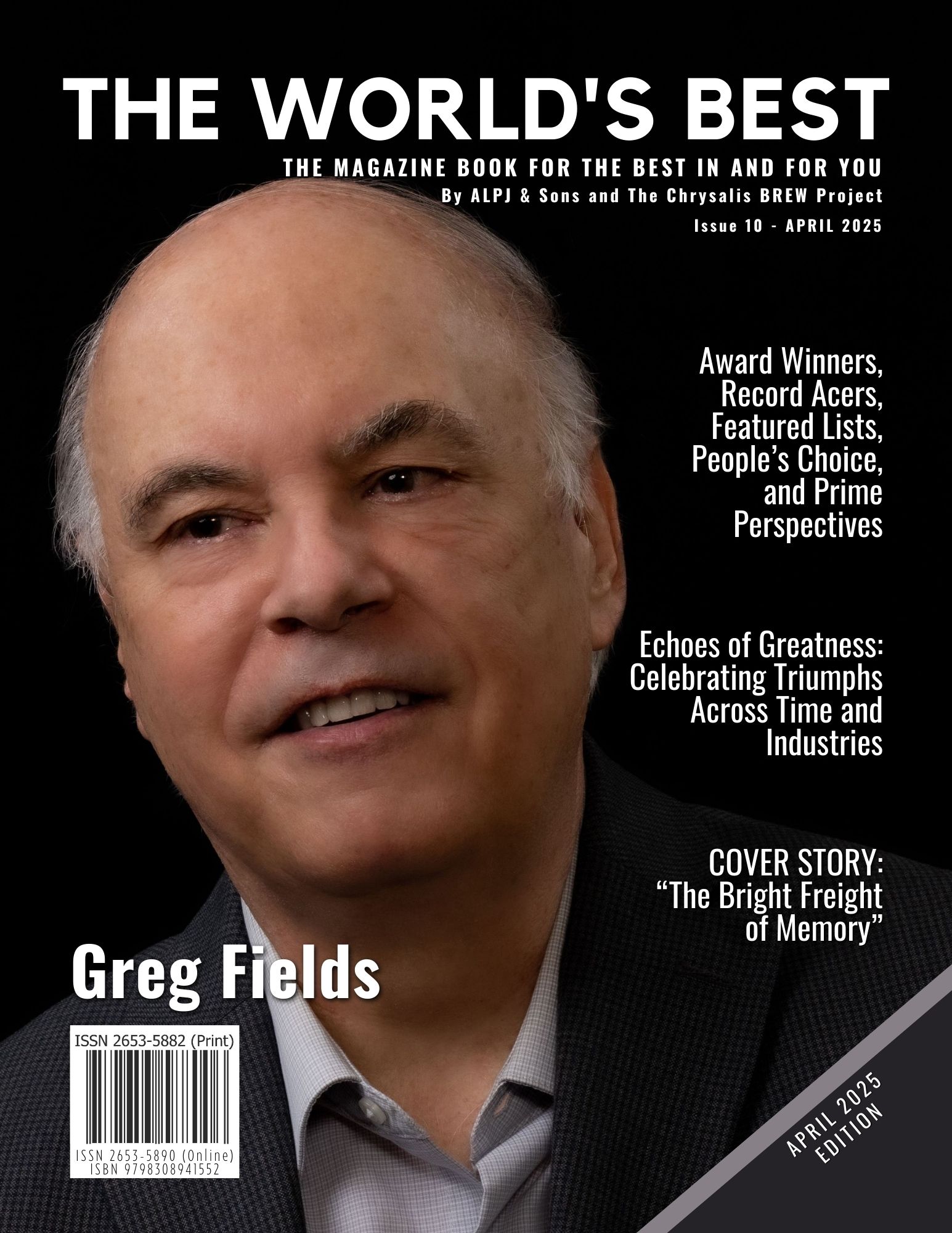
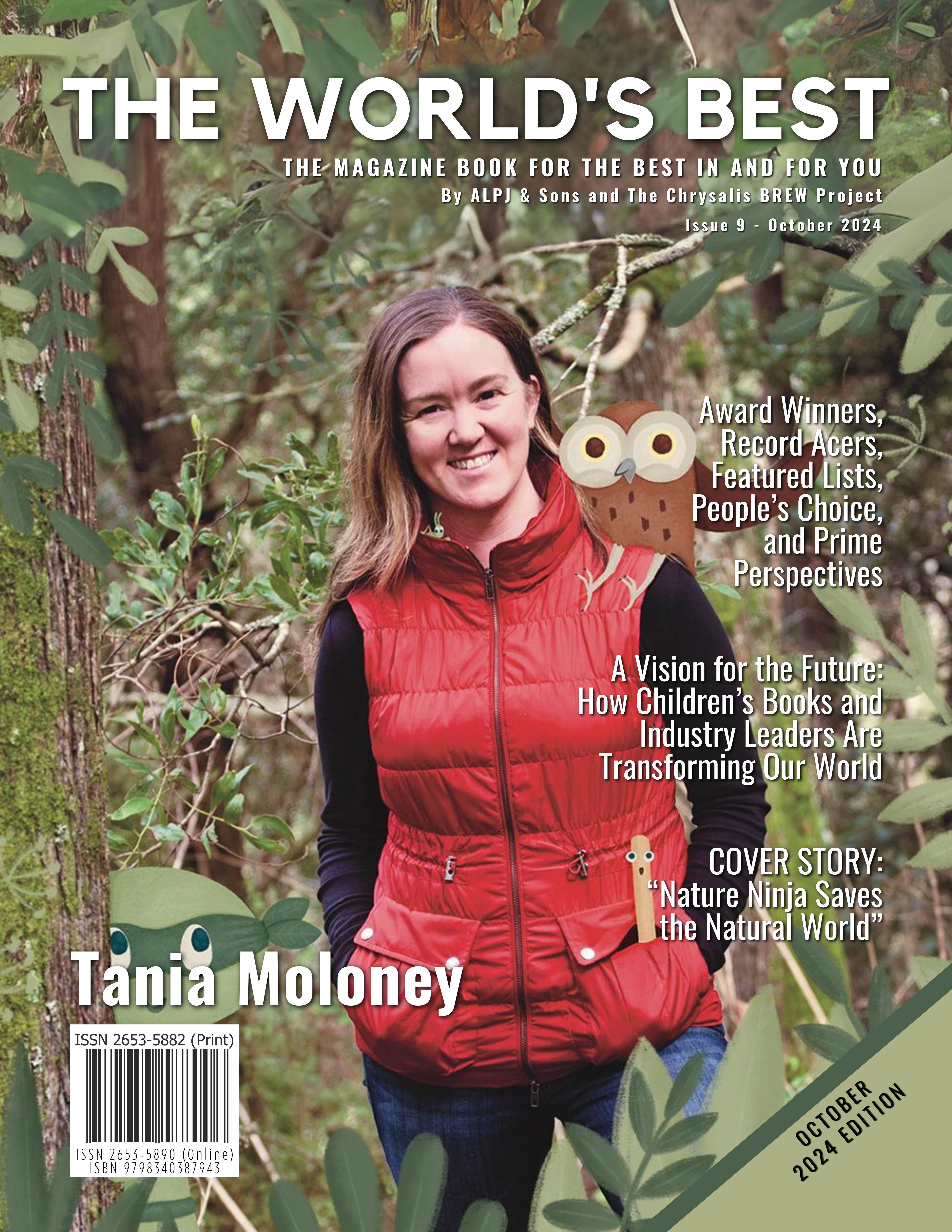
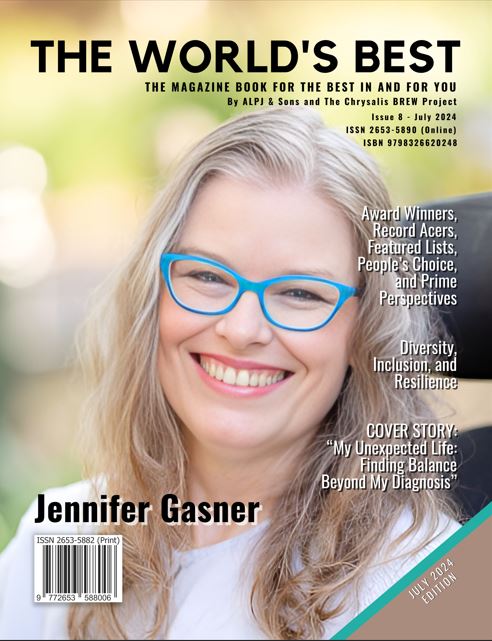
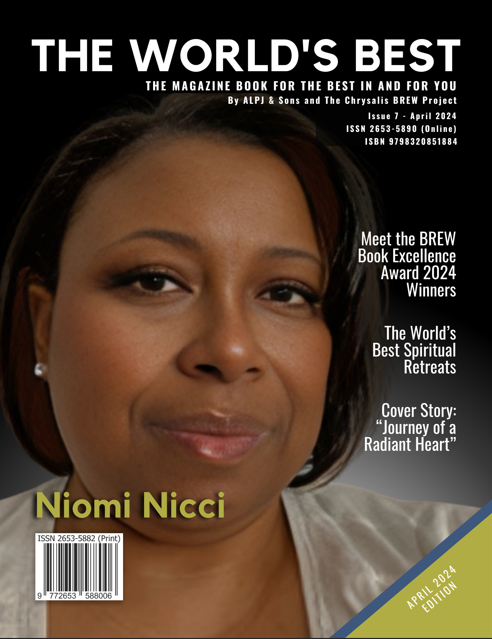





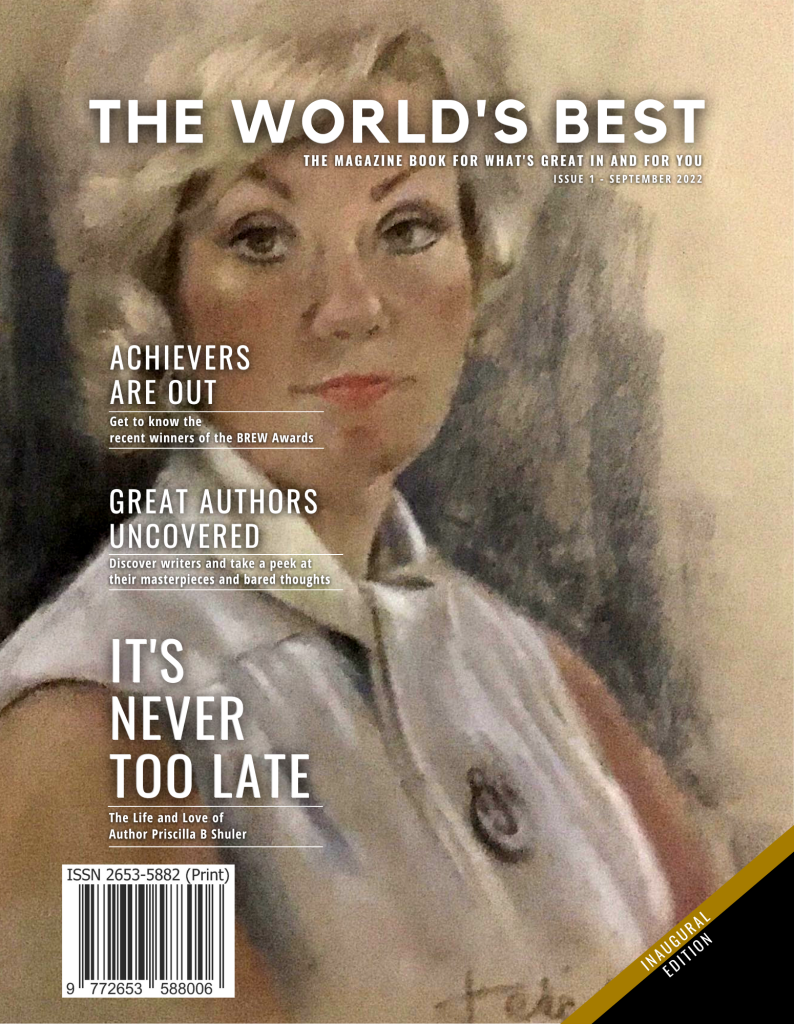

WHAT? Is dancing illegal? That’s preposterous! I hope Greg brings Dance Parade to Mexico!
LikeLiked by 4 people
It does seem unbelievable, doesn’t it? The idea of dancing being illegal in certain contexts or places can be surprising. Bringing initiatives like the Dance Parade to Mexico could be a fantastic way to celebrate the joy and freedom of dance while fostering a vibrant cultural exchange.
LikeLiked by 1 person
I would have lost if I had heard this in the “two truths and a lie” game. This article blew my mind.
LikeLike